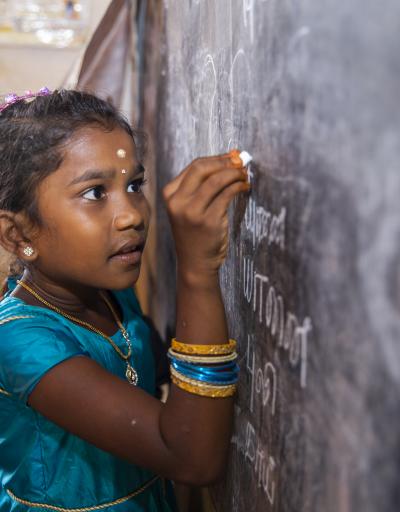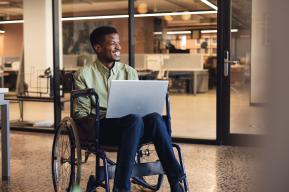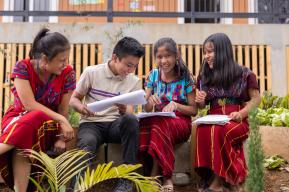
Article
Q&A: A mother and family's journey towards inclusive education

Meet Stephanie Gotlib and Danny Dickson, mother and son advocates for inclusive education from Melbourne, Australia. Stephanie is the parent of children with disability. Her adult son Adam has very high communication support needs and intellectual disability. Her other son, Danny, is a young man with disability. Since he was a young child, he has been someone who has spoken out on disability as diversity and not inability. The family shared their story with UNESCO ahead of an event on inclusive education at UN headquarters.
Tell us about yourselves, Adam and the people that support you.
We are a large family of two parents, myself, and my partner Jimmy, and four (now adult) children – Josh (26) Danny (24) Adam (23) and Charlotte (18). Danny and Adam live with disability.
As a family we know that disability strengthens families. We have faced many challenges within the community in our efforts for quality, enriching, and inclusive education.
Adam leads a rich, busy, and inclusive life. He loves music, art, travel, family, helping others, and has a particular passion for jam donuts. Adam has very high communication and behaviour support needs. He is a man of few words and lives with intellectual disability and autism.
How would you describe Adam’s education experience before being in an inclusive environment? And why did you decide to send him to an inclusive school?
Adam’s education journey started with him going to an inclusive preschool in our local community. This was a very positive experience. He was a happy and engaged child who was well liked by his peers and teachers. It was a place which accepted and valued diversity in all children, including children with disability.
Many professionals and educators advised Adam should attend a segregated or “specialist” school. Presented as a centre of expertise that would meet his needs best.
It was assumed and imposed on us that Adam would need to have a segregated education and a segregated life. This expectation was in attitudes, systems, and community norms.
The initial three years of Adam’s primary schooling were in segregated education. As a family we saw the devastating impact it had on Adam. He became withdrawn, sad, and very unsettled. Adam’s unhappiness and distress was attributed, by many, as being because of his “severe intellectual disability”. We rejected this.
Adam was in fact, being denied the status of a learner and his emotionality. For this, and many other reasons, we decided that Adam needed an inclusive education.

What changes did you see when Adam accessed inclusive education?
Ensuring Adam’s right to an inclusive education was life changing for him. Adam’s experience even led to Danny making a critical decision which changed the course of his education.
Adam completed the rest of his primary school education at the local school with his siblings. He started to thrive at school. He became inquisitive, happy, started to enjoy, and engage with learning again. He went on to complete his secondary education at the local inclusive high school.
At the inclusive schools, he was a valued and respected member of his school community. His inclusive education paved the way for an inclusive post school life. In 2023, Adam is an active citizen who contributes to the community through volunteer work and pursuing his interests.
What were the main factors that helped Adam feel welcomed and supported in his inclusive school?
Family support and advocacy were critical in working with Adam’s schools, to assist them to understand Adam and his support needs.
School leadership was vital. His primary and secondary school principals believed in inclusion. They believed all children should access an enriching quality education. They saw Adam as a valued member of the school community. The willingness of both school and family to be in partnership. To go on a journey chartering new ground with a student with high needs and intellectual disability.
There was also acceptance by all that mistakes may be made, and we all needed to learn from those mistakes. Legal advocacy was also vital as it ensured Adam received adequate funding for a range of support needs.
Finally, our speech therapist, who knew Adam since he was born, was a key reason for Adam’s positive experience of inclusive education. She was also Danny’s speech therapist so knew our family well. Sue was a woman with disability herself and taught us as a family and the schools so much about how Adam understands the world and his learning style.
Adam is himself a powerful teacher to many. He challenges entrenched prejudices and low expectations. He has been a teacher to peers, families, teachers, support workers, health professionals, policy-makers, politicians, unionists, and the wider community. All have learnt from Adam’s inclusive education journey.









